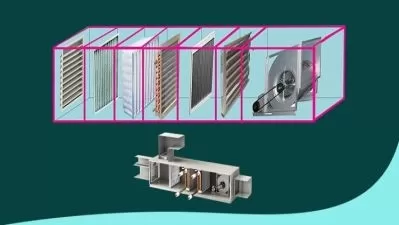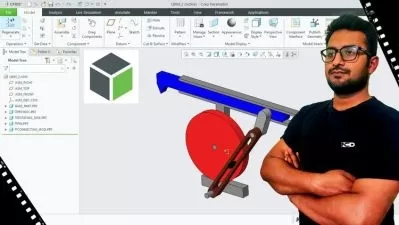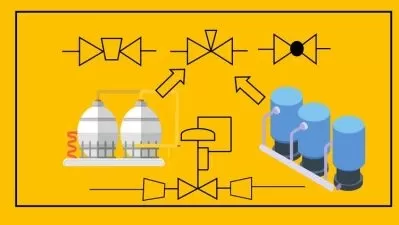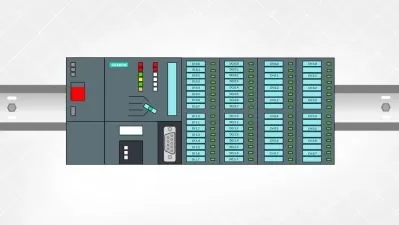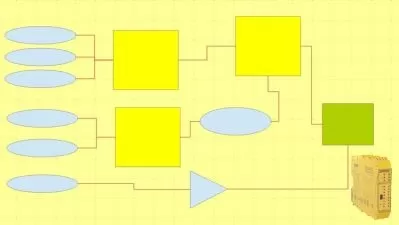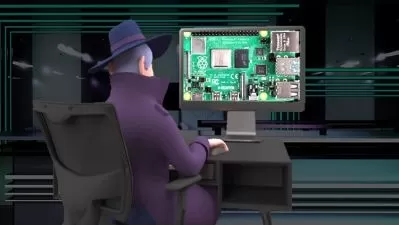Sensors Simulation for Autonomous Systems
SimXai Academy
46:20
Description
Sensors Simulation for Autonomous Systems using SimXai for Radar , Camera Lidar and Ultrasonics sensors using LabVIEW
What You'll Learn?
- Learn how to simulate Radar , Camera and Lidar sensors for autonomous systems using SimXai simulator
- Learn to detect obstacles in lidar point clouds through clustering and segmentation, apply thresholds and filters to radar data
- Process raw lidar data using Velodyne sensors with filtering, segmentation, and clustering to detect other vehicles on the road
- Analyze radar signatures to detect and track objects. Calculate velocity and orientation by correcting for radial velocity distortions, noise, and occlusions
Who is this for?
What You Need to Know?
More details
DescriptionSimulation is a key technology for developing, verifying and validating the behavior of highly automated vehicles in a variety of scenarios, environments, system configurations and driver characteristics. More and more engineers use this powerful technology in their daily work to solve multidimensional and interdisciplinary problems. Simulation is mainly used where classical experiments (under controlled conditions) are not possible due to the size, number and complexity or also because of the impact on the environment. The increasing product complexity of software-defined vehicles (SDV) and their mapping to digital twins (DT) also leads to deep supply chains in the simulation domain. To navigate this data ecosystem, it is not just about understanding the technology itself, but more importantly be able to confidently evaluate simulation models, methods and processes, know their limitations and optimize the relationship between business impact and resources used.
This course is designed to approach simulation-driven development of highly automated and self-driving cars from both a latest and a future technology perspective
Powered by NVIDIAÂ and Unreal Engine ,The course builds on standardization projects such as ASAM OpenX and covers software approaches to simplify participants' entry into the technology area
Modules
A - Sensors Simulation (Radar , Camera , Lidar , Ultrasonic Sensors)
B - Scenarios & Driving Functions ( ASAM OpenDrive , ASAM OpenScenario )
Who this course is for:
- Sensor Fusion Engineer , Vehicle Test Engineer , ADAS/AV Function Owner
Simulation is a key technology for developing, verifying and validating the behavior of highly automated vehicles in a variety of scenarios, environments, system configurations and driver characteristics. More and more engineers use this powerful technology in their daily work to solve multidimensional and interdisciplinary problems. Simulation is mainly used where classical experiments (under controlled conditions) are not possible due to the size, number and complexity or also because of the impact on the environment. The increasing product complexity of software-defined vehicles (SDV) and their mapping to digital twins (DT) also leads to deep supply chains in the simulation domain. To navigate this data ecosystem, it is not just about understanding the technology itself, but more importantly be able to confidently evaluate simulation models, methods and processes, know their limitations and optimize the relationship between business impact and resources used.
This course is designed to approach simulation-driven development of highly automated and self-driving cars from both a latest and a future technology perspective
Powered by NVIDIAÂ and Unreal Engine ,The course builds on standardization projects such as ASAM OpenX and covers software approaches to simplify participants' entry into the technology area
Modules
A - Sensors Simulation (Radar , Camera , Lidar , Ultrasonic Sensors)
B - Scenarios & Driving Functions ( ASAM OpenDrive , ASAM OpenScenario )
Who this course is for:
- Sensor Fusion Engineer , Vehicle Test Engineer , ADAS/AV Function Owner
User Reviews
Rating
SimXai Academy
Instructor's Courses
Udemy
View courses Udemy- language english
- Training sessions 17
- duration 46:20
- Release Date 2024/06/25






